
Food Safety Bulletin (2nd issue of 2016)
Feature Article
Food Safety Tips You Should Know When Travelling Abroad

Hong Kong people love to travel abroad. It is a good way to relieve stress and relax ourselves. We can also gain valuable experience by exploring the scenery and cultures of different places. In particular, with our passion for food, Hong Kongers are keen to seek out foreign culinary delights. While indulging in eating and drinking, we must, nonetheless, stay vigilant during travels to avoid contracting food- or water-borne diseases.
How to choose safe foods and beverages?
When choosing foods:

- Buy foods from hygienic and reliable stores. Do not patronise street food vendors with poor hygienic practices or who handle foods improperly.
- Ensure that food s are thoroughly cooked and served while hot.
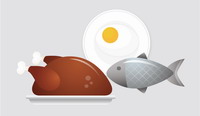 Avoid raw or undercooked foods, especially when eating meat, poultry, seafood and eggs.
Avoid raw or undercooked foods, especially when eating meat, poultry, seafood and eggs.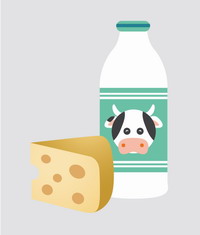 Avoid raw or unpasteurised milk and dairy products (e.g. cheese).
Avoid raw or unpasteurised milk and dairy products (e.g. cheese).- Avoid cooked or ready-to-eat foods that have been kept at room temperature for hours.
- Avoid foods that are not kept hot above 60 ºC or refrigerated at or below 4 ºC.
- Check the expiry dates on food labels. Do not consume expired foods.
- Read and follow the storage instructions on food labels. Keep perishable food s at 4 ºC or below if they are not immediately consumed after purchase.
When choosing beverages:

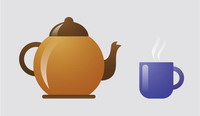 Drink only boiled water and beverages made with boiled water.
Drink only boiled water and beverages made with boiled water.- If it is not feasible to boil water, other water purification methods (e.g. chemical purifiers or water filters) can be considered.
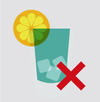 Avoid ice in drinks as ice cubes can be easily contaminated.
Avoid ice in drinks as ice cubes can be easily contaminated. Wipe and clean the packaging of canned or bottled drinks before opening them for direct consumption. Check carefully when coming into direct contact with the mouths of the bottles/cans.
Wipe and clean the packaging of canned or bottled drinks before opening them for direct consumption. Check carefully when coming into direct contact with the mouths of the bottles/cans.

Pathogenic microorganisms in the environment can be transferred to foods from unclean hands. We should wash hands thoroughly before handling and consuming food s when travelling abroad.
Readers' Corner
Antibiotics and Food Safety

When talking about "antibiotics", what usually come to mind are medicines for curing diseases. Has it ever occurred to you that antibiotics are also related to our daily foods?
Why are antibiotic residues present in foods?
Antibiotics are medicines that can kill bacteria or stop bacterial growth. They are widely used in human as well as veterinary medicine. According to the World Health Organization (WHO), approximately half of the current antibiotic production is for agricultural use, including food animal production. Antibiotics are used therapeutically to treat animals with infectious diseases and prophylactically to prevent illnesses or their spread within a herd. However, just like many other veterinary drugs, the administration of antibiotics to food animals has the potential of leaving residues in animal products such as meat and milk. Although not all antibiotic residues are unsafe for humans, the public health risk posed by the residues of some antibiotics (e.g. chloramphenicol) should not be overlooked.
Besides, we should be wary of the practice of some animal raisers to promote animal growth by adding low doses of antibiotics in the feed and/or water to increase the rate of weight gain and/or the efficiency of feed utilisation in food animals.

Consequences of improper use of antibiotics in food animals
Antibiotics are given to treat animal diseases, but they can cause serious consequences if improperly or excessively used. When antibiotics are administered to animals, they can kill or stop the growth of susceptible bacteria. However, bacteria that are resistant to antibiotics can multiply at the same time, eventually leading to an antibiotic-resistant bacterial population. Long-term use of low-dose antibiotics is favourable for the survival and growth of antibiotic-resistant bacteria. Humans can be subsequently infected by these bacteria through handling or consumption of contaminated foods or direct contact with animals harbouring them.
Should we stop using antibiotics?
Antibiotics can effectively control and prevent animal diseases, protect animal health and welfare, as well as satisfying the global demand for safe foods of animal origin. Nevertheless, misuse or overuse of antibiotics can have adverse effects on animal and human health. What should we choose? The World Organisation for Animal Health (OIE), WHO and the Food and Agriculture Organization of the United Nations (FAO) recommend prudent and responsible use of antimicrobials, including antibiotics. In general, antibiotics should only be applied when genuinely required. Their use in food animals should be administered under veterinary supervision. Antibiotics should not be used for growth promotion without appropriate risk analysis.
How are antibiotics in foods regulated by law in Hong Kong?
The Public Health and Municipal Services Ordinance (Cap. 132) requires that all foods for sale must be fit for human consumption. In addition, the Harmful Substances in Food Regulations (Cap. 132AF) govern the import and sale of food containing harmful substances. The Regulations stipulate the maximum concentrations of certain antibiotics and veterinary drugs allowed in specified foods and prohibit the presence of residues of seven veterinary drugs (including two antibiotics) in any fish, meat or milk.
Advice to the Public
- Purchase foods of animal origin from reliable sources.
- Observe good hygiene when preparing foods (particularly foods of animal origin like raw meat), including washing hands with soap after contact with raw meat.
- Cook foods thoroughly before consumption.
Carcinogens in Foods
Last year, the International Agency for Research on Cancer (IARC), the cancer research arm of WHO, issued the latest evaluation report on the carcinogenicity of consumption of processed meat and red meat. IARC, based on the strength of evidence and not the level of risk, has classified processed meat as "carcinogenic to humans" (Group 1) and red meat as "probably carcinogenic to humans" (Group 2A). This reminds us again how eating habits and health are closely related.
Group 1 carcinogens are most worthy of concern as there is sufficient evidence of their carcinogenicity in humans. Agents in this category include aflatoxins, alcoholic beverages, benzo[a]pyrene (B[a]P), dioxins and Chinese-style salted fish. The foods in our daily diet may contain such carcinogens. It is not easy to remove these agents from our diets completely , but we can change our living habits and refrain from eating foods that contain these carcinogens. Let us find out some carcinogens more commonly found in Hong Kong foods and learn ways to avoid intake of these substances from food consumption.
Aflatoxins
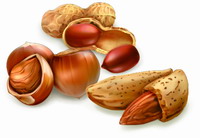
Aflatoxins are a group of natural toxic contaminants produced by certain moulds . They are among the most potent carcinogen s in nature and are conducive to the development of liver cancer, with hepatitis B carriers particularly affected . H uman exposure to aflatoxin s is mainly through the consumption of peanuts and maize, but aflatoxins can also be found in dried fruits, nuts, spices, crude vegetables oil, rice, etc.
While complete elimination of aflatoxins is not possible, food manufacturers can minimise the aflatoxin level s in foods by adopting good agricultural practice s, thus avoiding rejection of the crops produced. The public , on the other hand, should purchase food s from reliable retailers, store grain products properly in cool and dry places, look out for the expiration date of food s and discard mouldy or damaged food s so as to reduce exposure to aflatoxins.
Benzo[a]pyrene
![Benzo[a]pyrene](/english/multimedia/multimedia_pub/images/fsb_201602/Benzo%5Ba%5Dpyrene.jpg)
B[a]P is a type of polycyclic aromatic hydrocarbons (PAHs), which share similar toxicological properties. PAHs can be formed during incomplete combustion or pyrolysis of organic materials and are ubiquitous in nature. They are present everywhere in the environment and in different foods (including oils) at widely varying levels. By lowering the overall exposure to PAHs, it helps reduce exposure to B[a]P, and the same holds true for the reverse situation . Studies have suggested that cereals and oils are major sources of dietary exposure to B[a]P in humans. Locally, a study by the Centre for Food Safety (CFS) in 2004 revealed that the higher the cooking temperature or the closer the distance from the heat source when preparing barbecued meats or during grilling, the more PAHs will be generated. PAHs can also be found at higher levels in foods during c harcoal grilling than cooking with gas or electric roasting.
Members of the public should minimise exposure to PAHs as far as practicable. They should not over-indulge in barbecued meat, especially charcoal-grilled siu mei with the "skin and fat" portion. The charred parts of roasted meat should be removed before consumption. When preparing barbecued meat, we should take measures to avoid direct contact of the meat with flame and its fat from dripping onto the heat source. It is also advisable to grill meat at a lower temperature to prevent overcooking.
Processed meat

Processed meat refers to meat that has been transformed through salting, fermentation or other processes to enhance flavour or improve preservation. Examples of processed meat include sausages, corned beef and jerky. In the course of preparing processed meat, such as during curing and smoking, carcinogens can be formed. Nitrates and nitrites used for curing meats may also be transformed to carcinogenic N-nitroso compounds by bacteria in the human digestive tract.
We should avoid excessive consumption of processed meat and maintain a balanced and varied diet. Adopting a healthy lifestyle with regular exercise is the best way to prevent cancer. For application of food additives like nitrates, the trade should set maximum levels of use having regard to the minimum level required to achieve the desired effect.
News on New Dishes
Dragger on the Silver River ─ Steamed Garoupa Roll with Fig Sauce
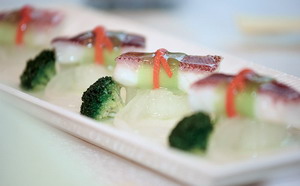
Seafood is one of the favourite food choices of Hong Kong people. In this issue, we have invited Mr William MA , a seasoned cook with over 40 years of culinary experience, to present a cooking demonstration for us. Mr MA is the Chinese Executive Chef of Gloucester Luk Kwok Hong Kong, a signatory of the Food Safety Charter . The dish is called " D r agger on the Silver River ─ Steamed Garoupa Roll with Fig Sauce ". Its essence lies in the fig sauce which gives the fish a refreshing taste and adds a nice finishing touch to the dish.

| Preparation Steps | Small Tips, Big Wisdom | |
|---|---|---|
Receiving 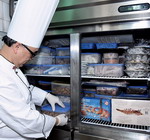 |
Purchase a live garoupa, vegetables and other ingredients from approved and reliable suppliers. | Upon receiving of the ingredients, check carefully to ensure their freshness and qualities. Keep vegetables under refrigeration at 4 ºC and the live garoupa in a fish tank with proper filtration and disinfection facilities. |
Rinsing 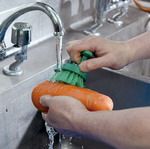 |
Gut the garoupa and rinse under water. Soak and rinse the vegetables and other ingredients thoroughly. | Rinsing vegetables under running water or soaking them in water can effectively reduce the risk of pesticide intake. |
Cutting  |
Cut the garoupa fillet into 4 portions. Season with fine salt, cornflour and canola oil. Peel the winter melon, cut it into cylinder-shaped pieces and scoop out flesh from the centre. Shred the white radish and carrot and thinly slice the Indian lettuce head. |
Cutting the ingredients into the required shapes can shorten the cooking time. |
Steaming 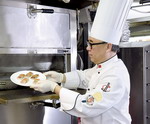 |
Bring water to the boil and add fine salt. Divide the shredded white radish into 4 portions and form rolls by wrapping a baby Chinese cabbage leaf around each portion firmly. Season the rolls and winter melon pieces by soaking them in salted water. Steam for 5 minutes. Form rolls by wrapping the Indian lettuce head slices around the garoupa meat and tie each roll tightly with a carrot strip. Steam for 3 minutes. |
Presetting the exact time and temperature for steaming can ensure that the garoupa is thoroughly cooked and preserve the tenderness of meat. Steaming is a healthier cooking method which can reduce the amount of cooking oil used and prevent the risk of formation of harmful substances during frying. |
Dish-up 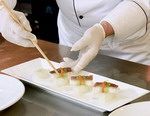 |
Top the winter melon pieces with steamed white radish rolls, followed by garoupa rolls. Blanch the chopped broccoli until done for garnishing the dish. | Blanching the broccoli with boiling water can keep it bright green to give a better appearance. |
Saucing 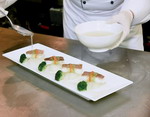 |
Stew the dried figs with water for 4 hours beforehand. Add fine salt and cornflour to thicken the sauce before pouring it onto the garoupa rolls. Ready to serve. | Make sure the thickened sauce has been brought to the boil before pouring it onto the garoupa rolls. The food should be consumed immediately. |
Tips from Chef MA
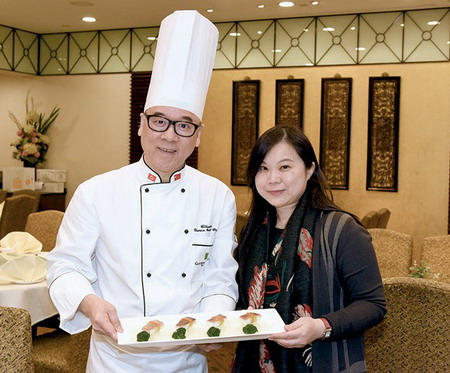
- Chef MA attaches great importance to the quality of ingredients. He suggests using a freshly gutted fish and avoiding over-seasoning (including overuse of monosodium glutamate ) during cooking in order not to spoil the unique f resh taste of fish.
- The garoupa fillet can be substituted by other thick fish fillets. It is preferable to use meat from the back of a fish.
- After w ash ing and drain ing the fish fillet dry , add a sprinkle of salt to enhance the fresh taste of fish.
- We can use a bamboo skewer to test whether the winter melon pieces are thoroughly cooked. It is advisable to set the slices aside after steaming to let heat penetrate the whole piece prior to skewer insertion.
Food Safety Plan Corner
Dragger on the Silver River ─ Steamed Garoupa Roll with Fig Sauce

Ingredients:
Garoupa, vegetables, winter melon, white radish, carrot, Indian lettuce head, baby Chinese cabbage, broccoli and dried figs
Thickened sauce:
Fine salt, cornflour and canola oil
Steps:
- Rinse the gutted garoupa under water.
- Take out the vegetables which are kept under refrigeration at 4°C or below. Soak the vegetables for an hour before rinsing them under running water.
- Peel the winter melon, cut it into cylinder-shape pieces and scoop out flesh from the centre. Shred the white radish and carrot, and thinly slice the Indian lettuce head.
- Bring water to the boil and add fine salt. Divide the shredded white radish into 4 portions and form rolls by wrapping a baby Chinese cabbage leaf around each portion firmly. Season the rolls and winter melon pieces by soaking them in salted water. Steam for 5 minutes.
- Cut the garoupa fillet into 4 portions. Season with fine salt, cornflour and canola oil.
- Form rolls by wrapping the Indian lettuce head slices around the garoupa meat and tie each roll tightly with a carrot strip. Steam for 3 minutes.
- Top the winter melon pieces with steamed white radish rolls, followed by garoupa rolls. Blanch the chopped broccoli until done for garnishing the dish.
- Stew dried figs with water for 4 hours beforehand. Add fine salt and cornflour to thicken the sauce before pouring it onto the garoupa rolls. Ready to serve.
Production Process
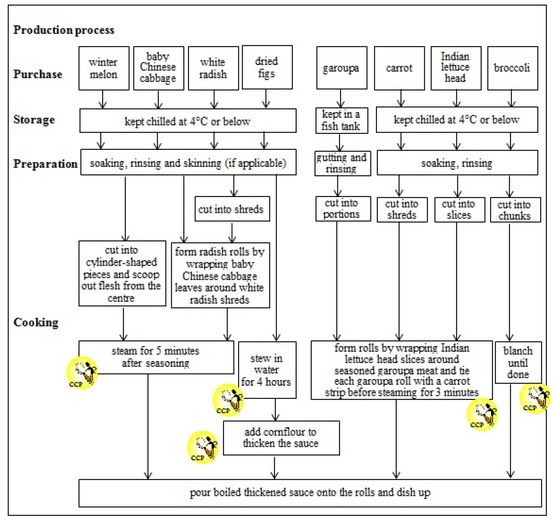
Briefing of Activities
Communication Resource Unit

Mong Kok is Hong Kong people's favourite destination for gourmet delights and entertainment. Here you can also visit the Communication Resource Unit (CRU) of the CFS at Fa Yuen Street Municipal Services Building. Have you ever paid a visit to the CRU when dining and doing shopping in Mong Kok?
The CRU operates under the Risk Communication Section of the CFS. It provides a wide range of promotional leaflets and posters on food safety and healthy eating for interested members of the public. The exhibition hall of the CRU not only displays exhibition panels on different topics, it is also a venue where publicity and educational activities are organised for the public and the trade to participate from time to time. Earlier in May and June, two sessions of the CFS Trade Talk and Workshop on Hazard Analysis and Critical Control Point (HACCP) were held in the exhibition hall to highlight proper food handling practices to food personnel. The activities also aimed at promoting the adoption of the HACCP System and the Food Safety Plan, thereby enhancing food safety.
We look forward to seeing you at the CRU during its opening hours. Please browse the CFS website (www.cfs.gov.hk) for more information.

8/F, Fa Yuen Street Municipal Services Building, 123A Fa Yuen Street, Mong Kok, Kowloon

Monday to Friday (except public holidays)
8:45 am - 1:00 pm
2:00 pm - 5:30 pm
Upcoming Activities
Food Hygiene Talks on "Healthy Cooking Starts Small" ( Public Series)
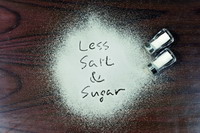
Hong Kong people are well aware of the importance of health and the need to eat less salt and sugar. However, questions may pop up at the critical juncture of implementation ─ How can I reduce the consumption of salt and sugar? To what extent should I cut down salt and sugar in diet?
The Government ' s target is to gradually reduce the intake of salt and sugar by Hong Kong people to the levels recommended by WHO. It is hoped that by 20 2 5, the population's average daily intake of salt can be reduced from 10 grams to 7 grams, whereas sugar intake should be less than 50 grams of free sugar (i.e. 10 sugar cubes) per day for an individual with a daily energy intake of 2 000 kilocalories.
Salt and sugar intakes are closely related to health. Excessive salt consumption will increase the risk of developing hypertension, stroke and coronary heart disease, while excessive intake of sugar may lead to obesity and dental caries. It is beneficial to health if we can develop the habit of maintaining a balanced and varied diet since childhood.
The theme of Food Safety Day 2016 is "Healthy Cooking Starts Small". CFS is launching a series of theme-related publicity activities to encourage community participation. The kick-off event was the "Junior Chefs' Culinary Ideas of Salt and Sugar Reduction Competition". Other than this, a series of talks will be jointly organised by CFS and various food trade associations from July to December 2016 to share practical tips on avoidance of excessive dietary intake of salt and sugar with the participants and encourage children to develop a healthy eating habit at an early age. Through these efforts, CFS seeks to further promote a diet low in salt and sugar to reduce the local population's salt and sugar intake to a satisfactory level.
The talks will be conducted in Cantonese for free admission to the public . An attendance certificate and a souvenir will be issued to each participant. All interested individuals are welcome. For further details including the dates and venues, please read the announcements posted to the CFS website ( www.cfs.gov.hk) .
Know more about Food Safety 2016
The Communication Resource Unit (CRU) of CFS at 8/F, Fa Yuen Street Municipal Services Building, 123A Fa Yuen Street, Mong K ok, Kowloon, is organising a series of activities on a regular basis under the campaign "Know more about Food Safety 2016" throughout the year . Education videos on food safety are shown at the exhibition hall of CRU from 3:30 p.m. to 4:30 p.m. on the first and third Tuesdays of each month (except public holidays). Exhibition panels on various food safety and hygiene topics, including nutrition labelling, pesticide and veterinary drug residues and food safety plans are displayed. Various kinds of leaflets and posters are also available for collection by the public.
Food Safety Q&A
What Should We Notice When Purchasing Foods Online?
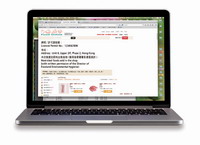
With its increasing popularity, online shopping has become a part of daily life for many people in Hong Kong. Everything from clothing, food, accommodation to transport can be purchased or arranged over the Internet. However, we must be cautious when it comes to online shopping for foods that we eat.
The public should purchase foods only from reputable online shops with relevant licences/permits and pay particular attention to the nature of foods, as the majority of food poisoning cases are associated with high-risk food items. What are high-risk foods? Generally speaking, these foods need to be refrigerated (4 oC) or frozen (-18 oC) and do not require to be cooked before consumption (i.e. ready-to-eat). Some common examples are :
- Seafood to be eaten raw ─ sashimi, marinated raw crabs or shrimps, raw oysters, etc.
- Cooked or cured meats, poultry, fish and seafood ─ ham, sausages, smoked turkey, smoked salmon, etc.
- Mixed foods ─ sushi, sandwiches, etc.
- Desserts ─ cakes, puddings or any desserts made with milk, eggs, cream, cheeses mousse, etc.

High-risk foods require special storage and transport conditions to control microbial risks, but it is not easy for consumers to verify if appropriate food safety measures have been put in place by online shops during production, processing, storage and delivery of food. When ordering high-risk foods online, we need to be more discerning to make sure that they come from reliable retailers. We should have a clear understanding of the nature and potential risks of the food items that we intend to purchase via the Internet. For the elderly, young children, pregnant women and people with weakened immune systems, extra precautions are advised.
To ensure food safety, the principles of "5 Keys to Food Safety" should also be observed for shopping for foods online. In applying the 5 keys from the purchase, storage, preparation and cooking of food to the management of leftovers, we should be able to prevent foodborne disease effectively.
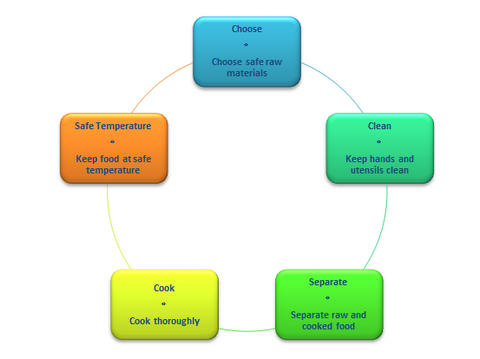
5 Keys to Food Safety
Truth against Fallacy
Are Colourful Foods Harmful to Health?
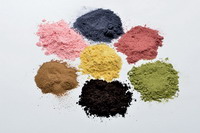
Ming and Pat went shopping at a supermarket today...
| Ming: | I wonder if there are any new products launched lately? |
| Pat: | Yes, here you are. A new brand of biscuits. Do you want to have a try? |
| Ming: | These biscuits are so colourful. Red, orange, yellow, green, light blue, deep blue, purple and various colours. Lots of artificial colourings must have been added. The less they are consumed, the better. |
| Pat: | Well, among the commonly used artificial food colourings, some are synthetic and some are natural. |
| Ming: | I didn't know that natural food colourings were available. I thought all colourings were artificial chemicals. |
| Pat: | Of course not. For example, β -carotene may be added to fruit juices. As its name suggests, this colouring can be found in carrots in our daily diet. Moreover, people may use turmeric obtained from rhizomes of plants to provide the intense colour of yellow curry pow d er or mustard. |
| Ming: | Oh, I see! But how can I tell whether a food contains additives other than food colourings? |
| Pat: | If you want to have a clear understanding of the ingredients of a food product, you can read the food label on the packaging before purchase. The ingredient list shown on the label sets out the ingredients in descending order of weight or volume determined as at the time of their use when the food was packaged. As for food additives that you are concerned about, they are declared in the ingredient list by both the functional class and the specific name or the identification number under the International Numbering System for Food Additives |
| Ming: | I've got it now. |
Brain Gym
Board Game
Rules: Players throw the dice in turn and make the number of moves from the START to the FINISH according to the numbers rolled and the instructions shown on the game board. The first player to land on the FINISH wins. If the number shown exceeds the number of steps required to reach the FINISH, the piece should be moved backward. The game is concluded when a player moves his/her piece to the FINISH with an exact roll of the dice.

|
FINISH |
33 |
32 Question 4 Correct: Go straight to the FINISH. Wrong: Return to square 3. |
31 |
30 The licensee provides food licence information when selling foods online. Go to square 33. |
92 |
28 |
|
21 |
22 |
23 |
24 Suspected food poisoning after accidental consumption of cooked foods kept at room temperature for more than 4 hours. Return to the START. |
25 |
26 Question 3 Correct : Move 3 steps forward. Wrong: Return to square 17. |
27 |
|
20 |
19 Receive hospital treatment due to consumption of wild mushrooms collected from the countryside. Return to square 9. |
18 |
17 |
16 Question 2 Correct: Get an additional roll. Wrong: Return to square 2. |
15 |
14 |
|
7 Diarrhea after consumption of expired foods. Skip one turn. |
8 |
9 |
10 |
11 |
12 |
13 |
|
6 |
5 |
4 Question 1 Correct: Move to square 18. Wrong: Return to the START. |
3 |
2 |
1 Patronise hygienic and reliable shops. Move to square 12. |
START |
| Question 1: | A friend has returned to Hong Kong from a trip with some egg rolls as snacks and small gifts. The egg rolls are without a proper health certificate. Does this constitute a breach of law? |
|---|---|
| Question 2: | After visiting his hometown in mainland China, my relative has brought some raw pork into Hong Kong without a proper health certificate for dinner use. Is this a breach of law? |
| Question 3: |
For physical premises issued with food business licences/restricted food permits, is it necessary for the operators to apply for a permit for online sale of restricted foods? |
| Question 4: | A colleague has bought some salmon sushi for lunch in the office. At what temperature should the sushi be stored if it is not consumed immediately? |
Answers:
Question 1: No.
Question 2: Yes.
Question 3: No.
Question 4: At or below 4 ºC.
Enquiries and Subscription
Printed copies of the Food Safety Bulletin can be obtained from the CRU at 8/F, Fa Yuen Street Municipal Services Building, 123A Fa Yuen Street, Mong Kok, Kowloon. For enquiries, please call 2381 6096. The public may also visit the CFS website ( www.cfs.gov.hk ) for the online version.
| Enquiry hotline | 2868 0000 |
|---|---|
| E-mail address | enquiries@fehd.gov.hk |
| CFS website | www.cfs.gov.hk |
